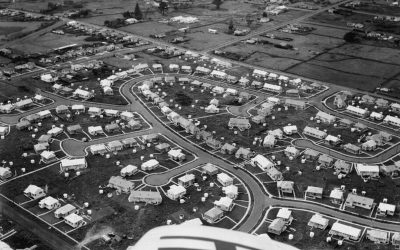The unpaved, unlit roads are clogged with traffic. Getting to and from work in the center of Moscow is a 90-minute crawl each way. The schools are lousy. There are no stores within walking distance. Local health-care facilities are primitive.
And Ekaterina Korobtsova couldn’t be happier.
In December, Korobtsova, her husband and their 3-year-old son left their Moscow apartment and moved into an all-pine, 2,700-square-foot home in this settlement a few miles outside Moscow’s city limits.
“When I was pregnant four years ago, I discovered there is no oxygen in Moscow,” said Korobtsova, 39, a senior manager in a telecommunications company. “Here, we have fresh air. We can walk in the forest. We will hear birds sing in the spring. And we don’t have to smell our neighbors’ cooking.”
Korobtsova is part of a wave of homesteaders transforming the forested environs of Moscow into the beginnings of suburbia. Billboards across the city advertise developments with names such as Navaho, Monaco, Chelsea, Sherwood or, injecting a little Russian flavor, Barvika Hills.
For decades, bucolic, peaceful villages such as Peredelkino were summer retreats for Muscovites escaping to modest country homes known as dachas. Peredelkino was known as a writers’ village. Boris Pasternak, author of the novel “Doctor Zhivago,” had a dacha here and is buried here as well.
But as in much of the countryside around Moscow, Peredelkino’s old character is fast vanishing. New apartment buildings, townhouse developments and gated communities of sumptuous villas are appearing beyond the capital’s outer beltway as Muscovites abandon urban living.
The super-rich trekked out of the city first. Now they are being followed by members of a rising middle class seeking cheaper housing in a cleaner environment.
Helping fuel the trend is a real-estate boom that is driving up prices in the city by about 30 percent a year. New but bare and unpainted apartments there now start at about $250 a square foot. In the suburbs, the cost is about $100.
“Moscow is extremely expensive, fantastically expensive, for real estate,” said Andrei Treivish, a professor at the Institute of Geography in Moscow. “The suburbs are growing not only due to the people from the city but people from other regions in Russia looking for a foothold near the city.”
In 2004, for the first time, construction of new residences, including apartments, in the region that rings Moscow exceeded the amount of new building in the city, according to government statistics.
Detached single-family homes outside Moscow range from $500,000 to the tens of million of dollars in the most exclusive neighborhoods, where Ferrari showrooms and Dolce & Gabbana boutiques grace onetime country roads.
Russians quaintly call their villas “cottages,” a misnomer for the neo-Georgian and neo-Gothic mansions springing up in the pine forests.
Set in a village of fabulous houses in Veshki, just northwest of the city line, Vladimir Kudr’s 6,500-square-foot home boasts a sauna and a small swimming pool in the basement, vaulted, light-filled rooms and lots of marble.
“We have horseback riding, bike riding, the forest, lakes, clean air,” said Kudr, 39, a computer-game entrepreneur who is married with three children. “For a family, it’s perfect.”
A more modest version of that lifestyle is increasingly feasible for middle-class Muscovites as mortgage lending, unheard of just five years ago, brings home ownership within their grasp.
Lending has grown to $6 billion annually, up from about $1 billion when Russian banks first started offering mortgages three years ago, according to government figures. The government has been pushing banks to lower mortgage interest rates, which currently stand at 11 percent.
Other city residents, such as Korobtsova and her husband, are selling or renting their city apartments, some of which were acquired in the privatizations of the 1990s, to finance larger homes in the suburbs.
“In five or 10 years, Moscow will look more like a Western metropolitan area,” said Oleg Repchenko, head of IRN, a real-estate analytical group. He predicts that services, improved transport links and schools will quickly follow. “Suburbanization is in its infancy, but it’s accelerating,” he said.
Big-box stores such as Ikea have already appeared in the outer ring, and half of all new office development is occurring there, Repchenko said.
To cater to the middle class, more modest townhouse developments have begun to appear in the past couple of years, with starting prices of around $300,000.
Aleksey Yefremov and his wife sold their Moscow apartment and moved into a townhouse in Dolgoprudny, just north of the city, last year. “Nobody is walking loudly upstairs. Nobody dumps their garbage on my doorstep. And the snow next to my house is white,” said Yefremov, a 52-year-old management consultant. “It feels like home.”


